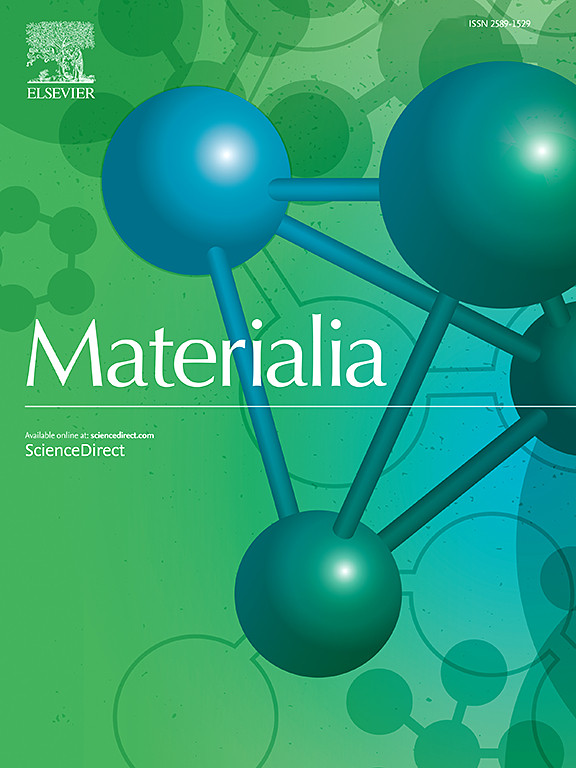Development and characterization of silk fibroin-enriched 3D printed hydrogels for photosensitizer delivery
IF 3
Q2 MATERIALS SCIENCE, MULTIDISCIPLINARY
引用次数: 0
Abstract
Photodynamic therapy (PDT) uses photosensitizing drugs and visible light to produce cytotoxic reactive oxygen species for targeting cell death. The aggregation of photosensitizers poses a significant challenge to the delivery of the treatment deeper within the tissue. In this study we developed 3D-printed hydrogels composed of gelatin/alginate and Pluronic® F127/alginate polymers with various silk fibroin concentrations to act as reservoirs for the sustained delivery of photosensitizers using water-soluble porphyrin and phenalenone as model drugs. We used rheology and spectrophotometry to analyze the 3D hydrogel scaffolds, focusing on the effect of silk fibroin on photosensitiser incorporation and release. The study showed that increased silk fibroin concentration affected the mechanical strength and the printability of the hydrogels. Compression analysis showed decreased hydrogel mechanical strength at higher silk fibroin concentrations, and cell viability assays indicated the biocompatibility of these hydrogels. Rapid photosensitizer release was observed, aligning with first-order kinetics for gelatin-based and the Higuchi model for hydrogels based on Pluronic® F-127. These findings highlight the potential of 3D-printed hydrogels as a reservoir for the sustained release of photosensitizers and underscore the importance of hydrogel formulation.

用于光敏剂输送的富含丝素蛋白的3D打印水凝胶的开发和表征
光动力疗法(PDT)利用光敏药物和可见光产生细胞毒性活性氧来靶向细胞死亡。光敏剂的聚集对组织内部深层治疗的递送提出了重大挑战。在这项研究中,我们开发了3d打印的水凝胶,由明胶/海藻酸盐和Pluronic®F127/海藻酸盐聚合物组成,具有不同的丝素蛋白浓度,作为持续递送光敏剂的储存库,使用水溶性卟啉和苯烯酮作为模型药物。采用流变学和分光光度法对三维水凝胶支架进行分析,重点研究丝素蛋白对光敏剂掺入和释放的影响。研究表明,丝素浓度的增加会影响水凝胶的机械强度和印刷性能。压缩分析表明,在丝素浓度较高时,水凝胶的机械强度降低,细胞活力测定表明这些水凝胶具有生物相容性。观察到光敏剂的快速释放,符合明胶为基础的一级动力学和基于Pluronic®F-127的水凝胶的Higuchi模型。这些发现突出了3d打印水凝胶作为光敏剂持续释放储存库的潜力,并强调了水凝胶配方的重要性。
本文章由计算机程序翻译,如有差异,请以英文原文为准。
求助全文
约1分钟内获得全文
求助全文
来源期刊

Materialia
MATERIALS SCIENCE, MULTIDISCIPLINARY-
CiteScore
6.40
自引率
2.90%
发文量
345
审稿时长
36 days
期刊介绍:
Materialia is a multidisciplinary journal of materials science and engineering that publishes original peer-reviewed research articles. Articles in Materialia advance the understanding of the relationship between processing, structure, property, and function of materials.
Materialia publishes full-length research articles, review articles, and letters (short communications). In addition to receiving direct submissions, Materialia also accepts transfers from Acta Materialia, Inc. partner journals. Materialia offers authors the choice to publish on an open access model (with author fee), or on a subscription model (with no author fee).
 求助内容:
求助内容: 应助结果提醒方式:
应助结果提醒方式:


